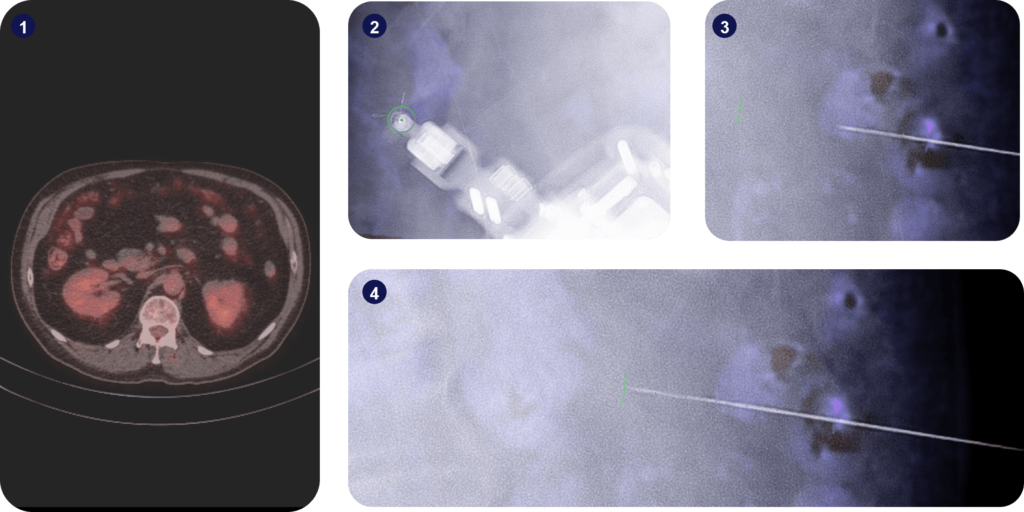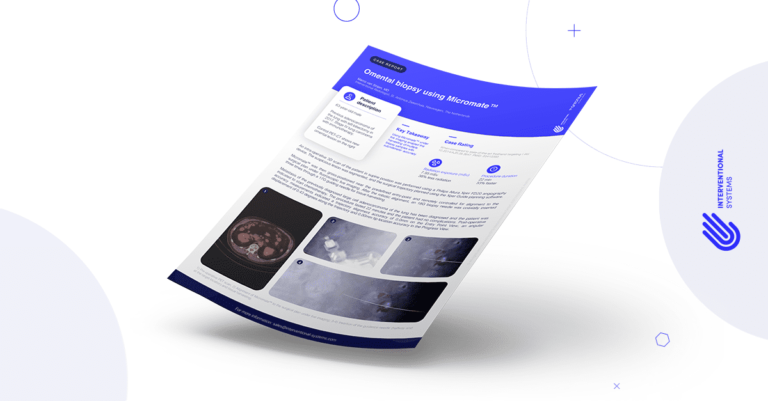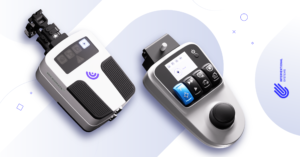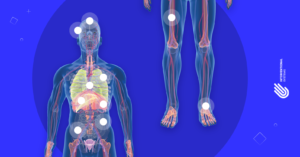Micromate™ Case Report series presents real cases performed by physicians currently using our full-fledged robotic platform for percutaneous procedures.
Today, we join Dr. Marco van Strijen, Interventional Radiologist at the St. Antonius Hospital, for a robot-guided omental biopsy.
Clinical Context
The patient was a 63-year-old male with a previous adenocarcinoma of the lung removed with left lobectomy in 2017 and a Stage IV lung carcinoma treated with immunotherapy.
Control PET-CT scans showed a new omental lesion on the right.
Interventional Procedure
An intra-operative 3D scan of the patient in a supine position was performed using a Philips Allura Xper FD20 angiography device. The suspicious lesion was segmented, and the surgical trajectory was planned using the Xper Guide planning software.
Micromate™ was then gross-positioned near the predefined entry-point and remotely controlled for alignment to the surgical plan under live fluoroscopic imaging.
After the robotic alignment, an 18G biopsy needle was coaxially inserted three times through a 17G guiding needle for tissue harvesting.

Metastasis of the previously diagnosed large cell adenocarcinoma of the lung has been diagnosed, and the patient was indicated to start chemotherapy.
The procedure lasted 22 minutes, and the patient had no complications.
Post-operative accuracy measurements indicated a trajectory alignment accuracy of 0.00mm on the Entry Point View, an angular displacement of 0.43 degrees along the trajectory, and 0.00mm tip location accuracy in the Progress View.
Key Takeaway
Using Micromate™ under live imaging enabled the harvesting of multiple biopsy samples with submillimeter accuracy.
Case Rating*
Radiation exposure: 38% less radiation (7.95 mSv)
Procedure duration: 33% faster (22 min)
*When compared to state-of-the-art freehand targeting, doi: 10.2214/AJR.09.3647. PMID: 20410392


